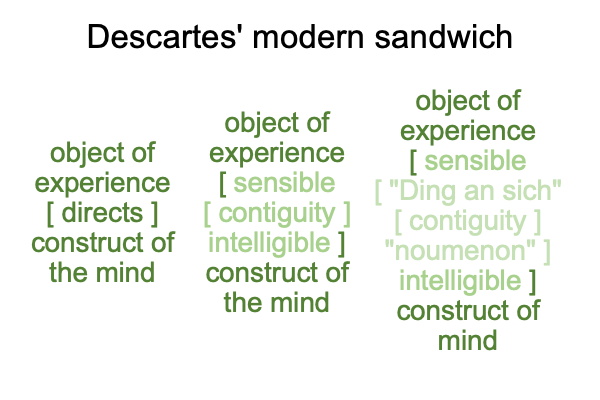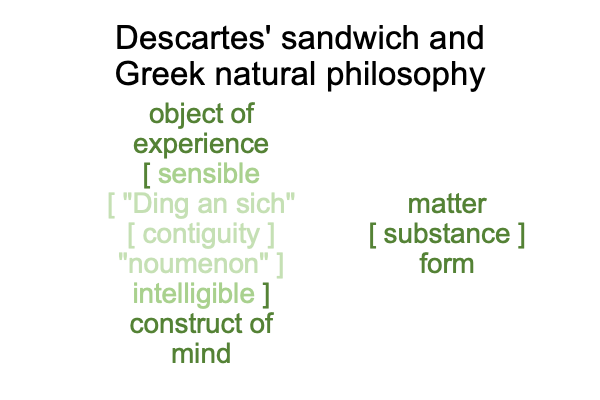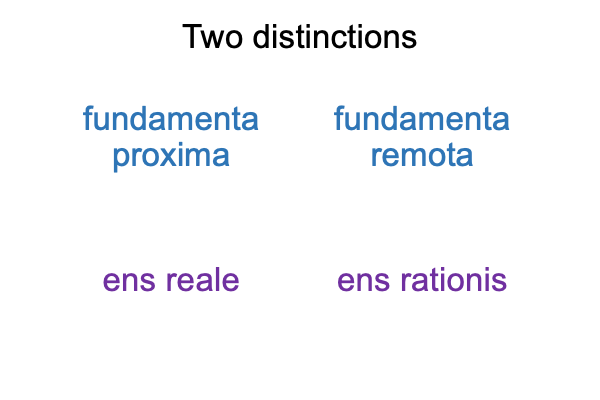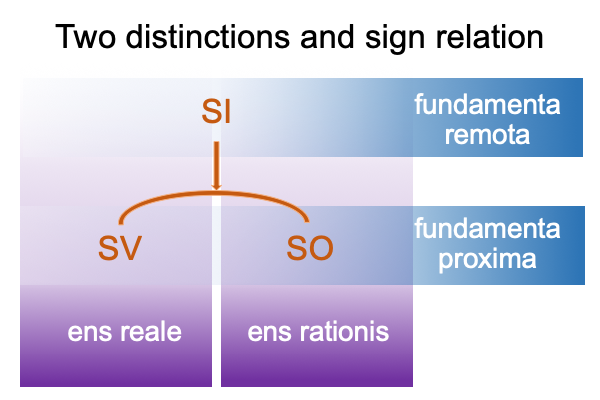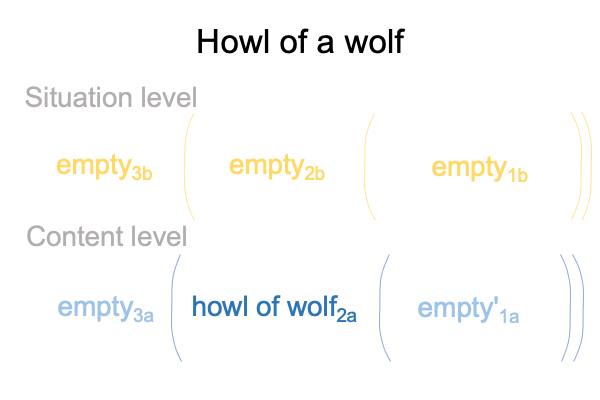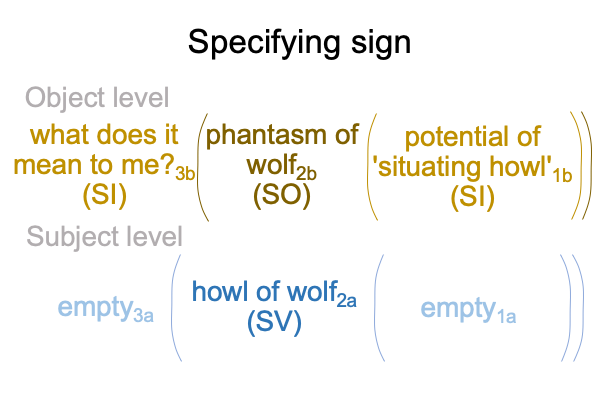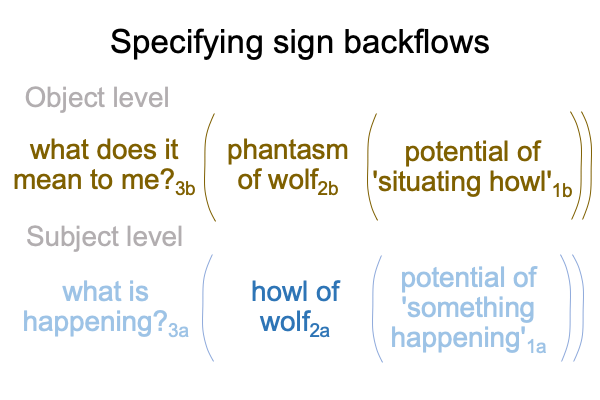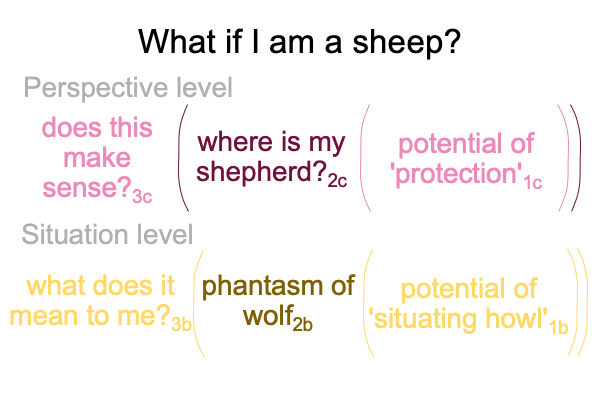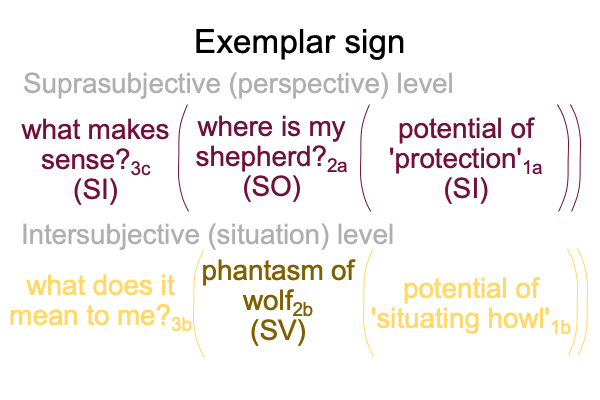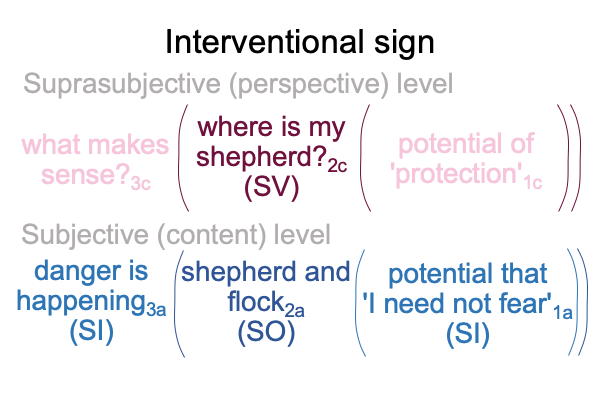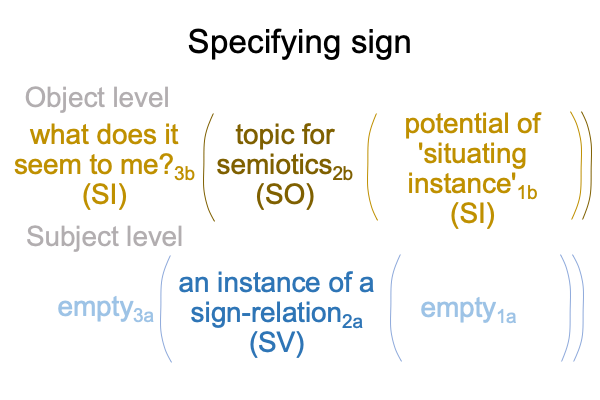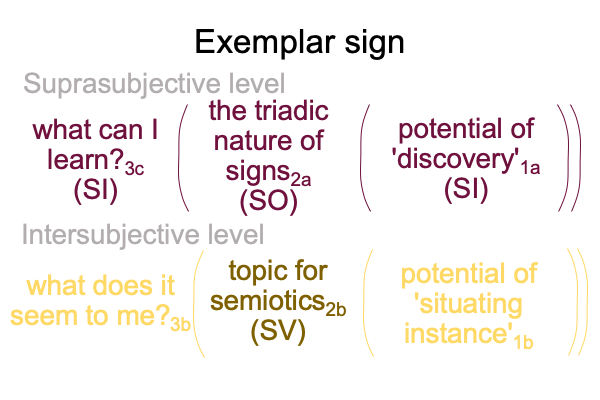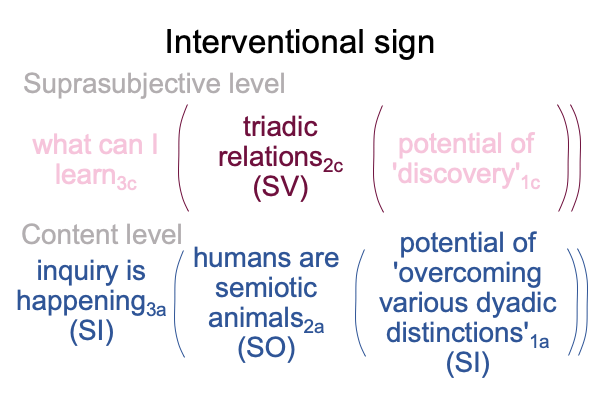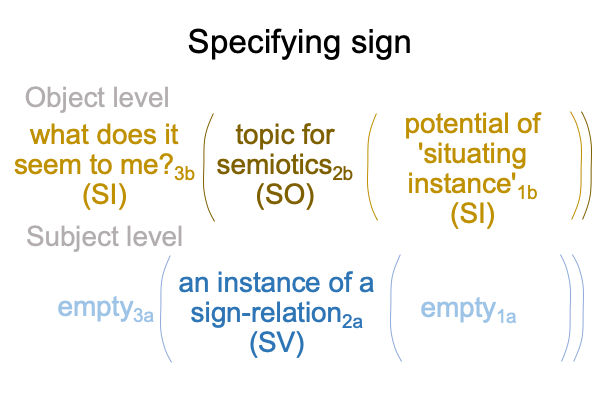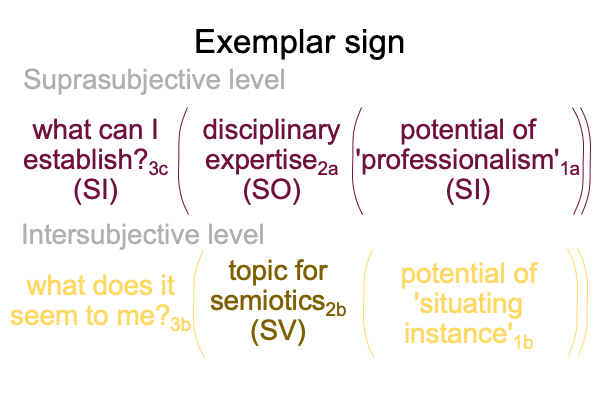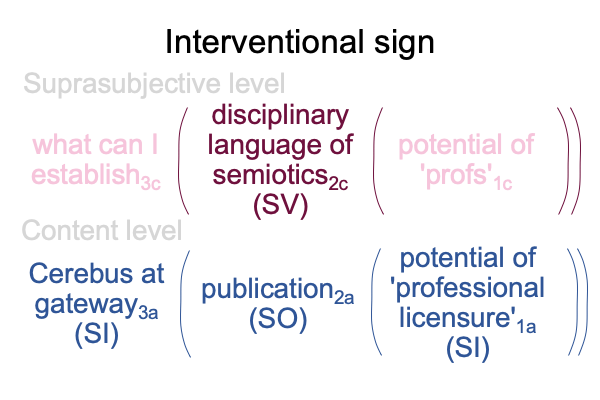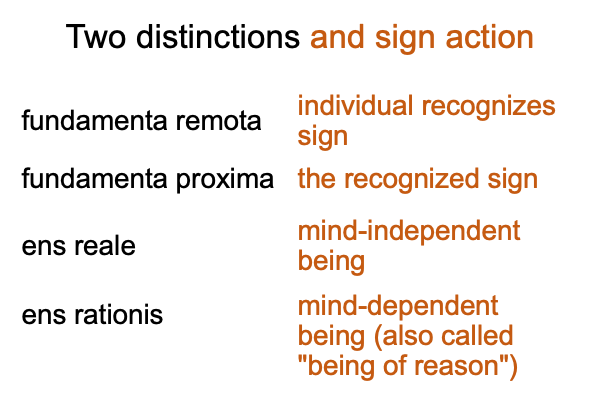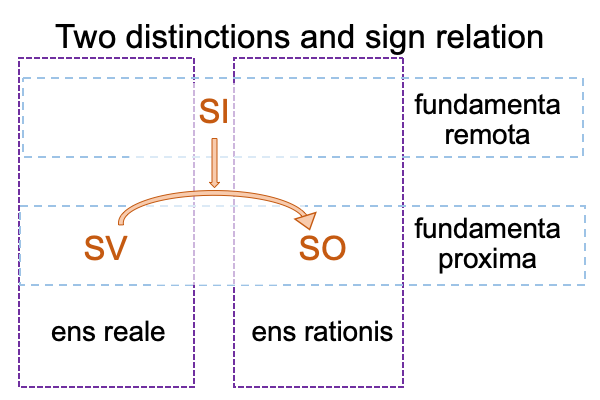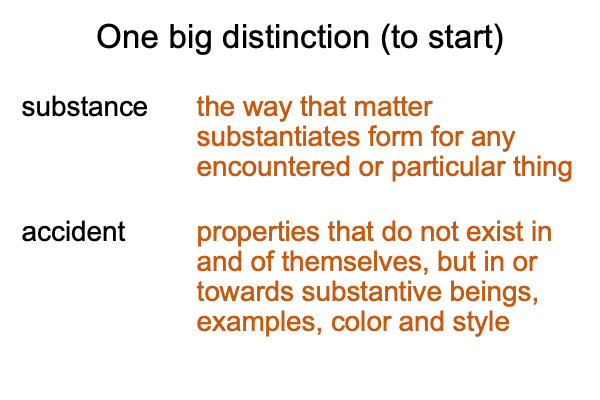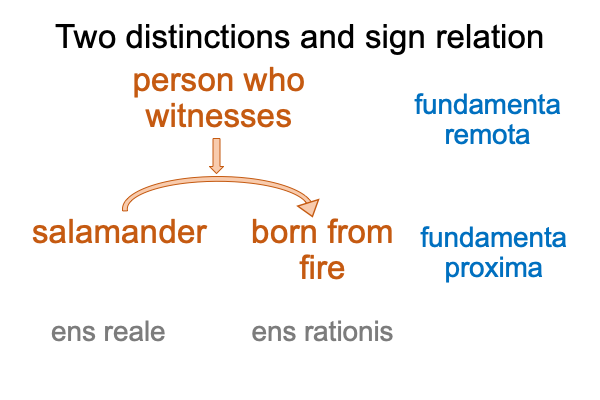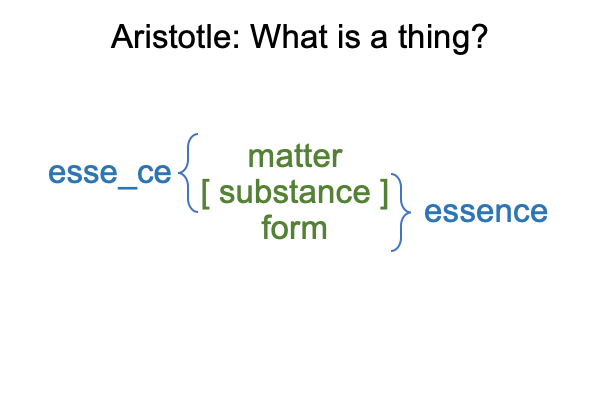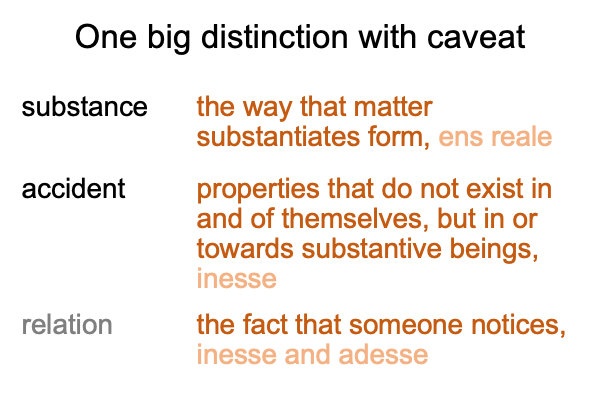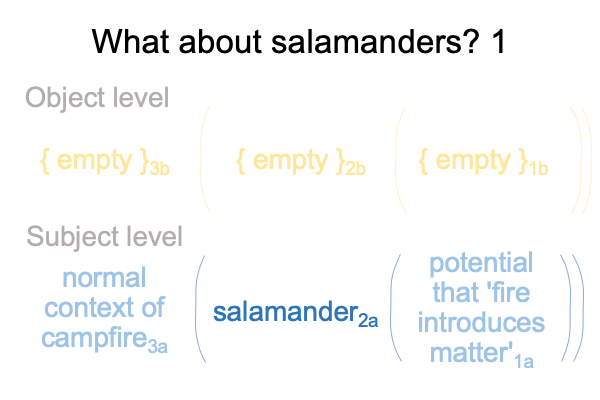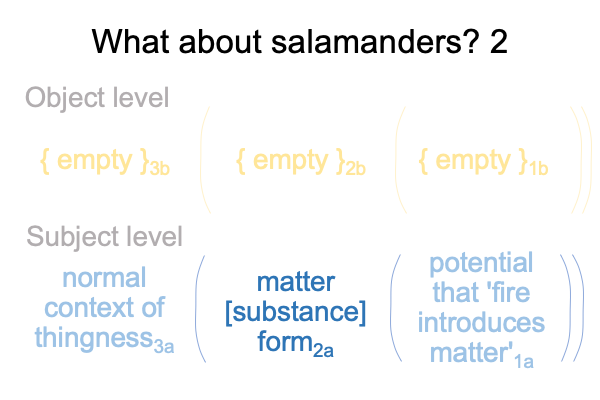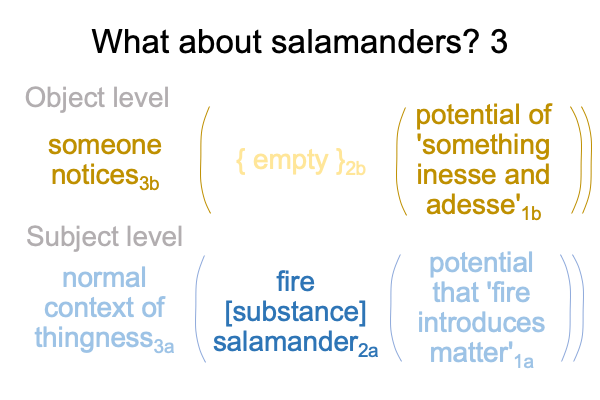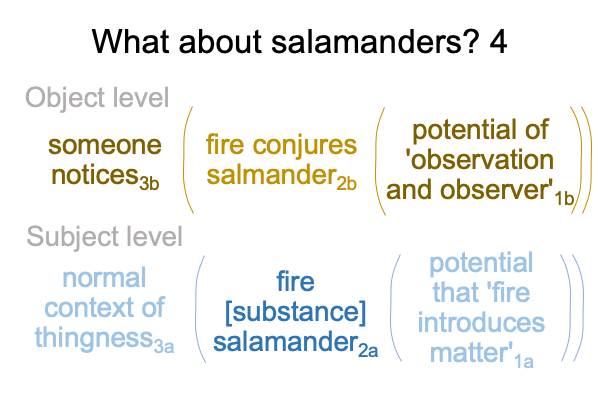Looking at John Deely’s Book (2010) “Semiotic Animal” (Part 6 of 22)
0040 Of course, one immediate implication places Descartes’ dyad into Saussure’s specifying sign, with modifications, as follows.
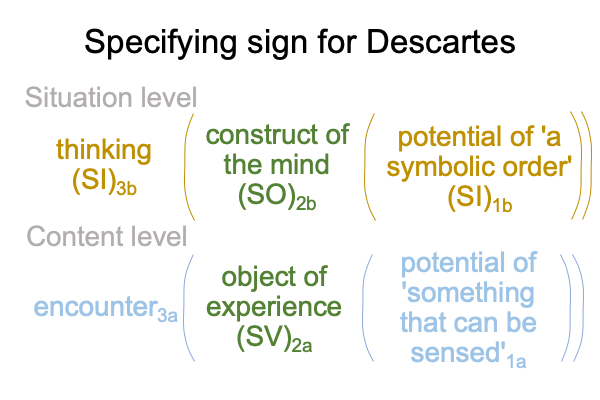
0041 The two-level interscope speaks in the disciplinary languages of category-based nested forms and of semiotics.
In the column of secondness, a construct of the mind2b virtually situates (and emerges from) an object of experience2a.
An object of experience2a (sign-vehicle) stands for a construct of the mind2b (sign-object) in regards to the normal context of thinking3b arising from the potential of ‘a symbolic order’1b (sign-interpretant).
0042 Compare that specifying sign to the first unwinding of Descartes’ dyadic pairing into a single category-based nested form.
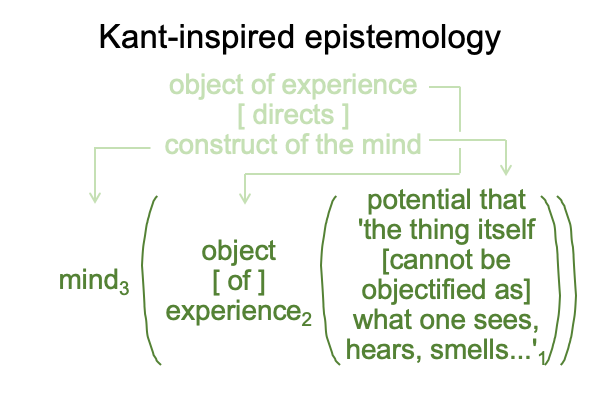
0043 If I compare each depiction, I see that the two-level interscope’s sign-relation cannot manifest in the epistemological category-based nested form.
Still, matching epistemology and specifying sign in the realm of actuality produces an evocative comparison.
An object of experience2 for the Kant-inspired epistemology corresponds to a construct of the mind2b virtually situating the object of experience2a in the manner of a sign-object being paired to a sign-vehicle (by a sign-interpretant).
Latin schoolmen apply the label of fundamenta proximata (a proximate fundament) to the Kant-framed object of experience2, corresponding to the apparently simultaneous character of the sign-vehicle [stands for] the sign-object. When I see a sign-vehicle (outside of me) as standing for a sign-object (inside of me), then the fundament, the sign-vehicle, is the proximate cause of, what I can call, a “sign”.
0044 And that brings me back to Deely’s question, asking, “How do we define humans as semiotic animals?”
Well, for one, contemporary philosophers and intellectuals are not aware that modern dyads, such as the one from Descartes and the one from Saussure, can squirm their way into postmodern triads. So, modern academics write about these dyads without realizing that their written words (parole) express triadic relations, whether as category-based nested forms or specifying signs (langue).
I marvel at their genius.
0045 In chapters four and five, Deely retraces the history and etymology of the word, “semiotics”.
He knows a lot about this topic, having written the masterwork, Four Ages of Understanding: The First Postmodern Survey of Philosophy from Ancient Times to The Turn of the Twenty-First Century (2001, University of Toronto Press).
But, the chapters for this book are brief. Plus, they are sort of funny, in a Divine Comedy sort of way. There are two styles of revelation. Fast and slow.
0046 Descartes writes in the 1600s. Saussure presents his course on linguistics in the early 1900s. Their dyads are ideas, presented in the structure of Peirce’s secondness, where one real element [accounts for] another real element. Secondness is the realm of actuality, so the ideas express the look and the feel of actuality.
However, these actualities are received by brains adapted to the realness of triadic relations in the Lebenswelt that we evolved in. So, as modern intellectuals address these ideas as entities belonging to the realm of actuality, they unwittingly explore category-based nested forms and follow the contours of specifying signs.
0047 Deely does not have the diagrams to make this statement. However, in chapter six (and in chapter one), he tells a story.
In 2003, then pope, John Paul II, calls a Congress of Thomistic Philosophers, in order to discuss what happened in philosophy in this Age of Ideas.
John Deely attends, with his massive book in tow, intent on giving the pope himself a copy.
Yet, he does not succeed.
0048 The 2003 Congress of Thomistic Philosophers does not declare that humans are semiotic animals.

